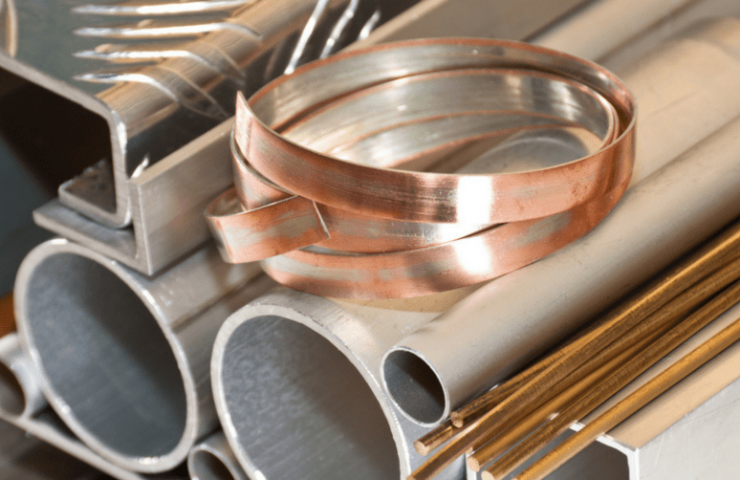In the bowels of the earth, metals are most extensively represented. All of them, except for mercury, are solids with a characteristic metallic luster and the ability to transmit electricity and heat well.
They have a unique combination of strength and ductility. They can be forged, welded, drawn into wire, rolled into sheet and section products, and used for casting. By chemical composition, metals are classified into ferrous and non-ferrous.
This division is built on a very simple principle - iron is present in the composition of ferrous metals and alloys, but it is absent in non-ferrous ones. Naturally, the difference in chemical composition also determines various physical properties.
Ferrous metals group
It is based on carbon and alloy steels . In addition to iron and carbon (its mass fraction does not exceed 2.14%), they contain:
-
deoxidizers that minimize the amount of oxygen in molten steel;
-
alloying components that improve general physical and individual service properties.
Despite the high parameters of strength, wear resistance, good plasticity and impact strength, steels are prone to rusting. However, they are susceptible to intercrystalline, atmospheric, chemical and electrochemical corrosion. The exception is stainless alloys. They contain an increased amount of chromium, which, in connection with iron and carbon, contributes to the high resistance of steel to rust, pitting and fretting corrosion.
This group also includes white, malleable, gray and high-strength cast irons. These are also alloys of iron, carbon and alloying substances. Only the mass fraction of C exceeds the threshold of 2.15%. In addition, in cast iron, carbon is in the form of non-metallic inclusions of graphite or cementite. This structure gives cast irons strength, but makes them brittle and reduces ductility.
All ferrous metals have various shades of gray and exhibit magnetic properties. The exception is certain grades of food alloyed steels. They are widely used as building and structural materials.
Group of non-ferrous metals
At the dawn of the development of civilization, mankind was the first to use non-ferrous metals. Initially it was copper, and then its alloy - bronze. But these are not the only ones presented by non-ferrous metals. This group is quite extensive, therefore non-ferrous metals are also subdivided into:
-
heavy. These include all the same copper, including its derivatives alloys - bronze and brass, nickel, tin, lead and zinc;
-
lungs. These are aluminum, magnesium, titanium and their alloys.
So, non-ferrous metals can have a structure in shades of various colors: from reddish copper to silvery white tin and aluminum. It is for this reason that gold, silver and platinum, which are precious metals, and representatives of the rare earth group - lanthanum, cerium, neodymium, are sometimes ranked in this category.
The properties of non-ferrous metals are more variable, and one of the generalizing qualities, in addition to the absence of iron, is corrosion resistance. They differ in density, weight, magnetic properties, electrical conductivity and refractoriness.
Copper, aluminum and zinc are most in demand in the industry. They are:
-
are used as construction material;
-
used as metal protective coatings for steel;
-
act in the same way as Ti, Mg, Cr, Ni, Mo, W, V, Co, alloying components in the smelting of steel, cast iron and non-ferrous alloys.
Recycling
A key advantage that levels the difference between ferrous and non-ferrous metals is the ability to recycle. Only steels and cast irons in the process of remelting partially lose their primary properties due to the loss of chemical elements, which cannot be said about copper and aluminum.
Cost
If we compare the prices of ferrous and non-ferrous metals, the latter will turn out to be more expensive. This is due to their lesser presence in the earth's crust and the expensive technology of ore processing and smelting.




